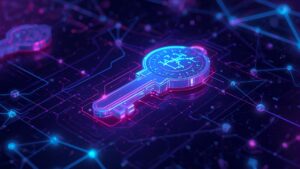Finding the most profitable bitcoin mining machine in 2025 requires careful analysis of hash rates, power consumption, and current market conditions. With Bitcoin’s price volatility and increasing mining difficulty, selecting the right hardware can make the difference between profitable operations and financial losses. The cryptocurrency mining landscape has evolved dramatically, with newer ASIC (Application-Specific Integrated Circuit) miners delivering unprecedented efficiency levels. The most profitable bitcoin mining machine today combines high hash rates with energy efficiency to maximize returns on investment. Current market leaders include models from Bitmain, MicroBT, and Canaan, each offering unique advantages for different mining scenarios. Whether you’re a beginner or experienced miner, understanding profitability metrics is crucial for making informed decisions in this competitive industry.
What Makes a Bitcoin Mining Machine Profitable?
Key Profitability Factors

Several critical factors determine whether a bitcoin mining machine will generate sustainable profits:
Hash Rate Performance: The hash rate, measured in terahashes per second (TH/s), indicates how many calculations a miner can perform. Higher hash rates generally mean better chances of solving blocks and earning rewards.
Power Efficiency: Modern miners measure efficiency in joules per terahash (J/TH). Lower numbers indicate better efficiency, directly impacting electricity costs and overall profitability.
Initial Investment Cost: The purchase price affects your return on investment timeline. More expensive machines may offer better performance but require longer payback periods.
Electricity Costs: Mining profitability heavily depends on local electricity rates. Miners in regions with cheap power (under $0.06/kWh) have significant advantages over those paying premium rates.
Network Difficulty: Bitcoin’s mining difficulty adjusts every 2,016 blocks, affecting how hard it is to mine new blocks. Rising difficulty can reduce profitability for older machines.
Top 5 Most Profitable Bitcoin Mining Machines in 2025
Bitmain Antminer S21 XP Hyd (Most Profitable Overall)
The Bitmain Antminer S21e XP Hyd 3U is the most profitable Bitcoin mining machine currently. This hydro-cooled powerhouse delivers exceptional performance for large-scale operations.
Technical Specifications:
- Hash Rate: 473 TH/s
- Power Consumption: 5,360W
- Efficiency: 11.3 J/TH
- Cooling: Hydro (Water-cooled)
- Price Range: $8,000-$12,000
Profitability Analysis: With current Bitcoin prices and average electricity costs of $0.06/kWh, this machine can generate approximately $15-25 daily profit, depending on market conditions.
Bitmain Antminer S19 XP Hydro (255Th)
At time of writing, the most profitable Bitcoin miner is the Bitmain Antminer S19 XP Hydro (255Th). Released by Bitmain on March 12, 2022, this mining machine offers a remarkable hash rate of 255Th/s using the SHA-256 algorithm, all while consuming 5304W of power.
Technical Specifications:
- Hash Rate: 255 TH/s
- Power Consumption: 5,304W
- Efficiency: 20.8 J/TH
- Cooling: Hydro (Water-cooled)
- Price Range: $4,000-$6,500
This proven model remains highly competitive despite being released in 2022, offering excellent value for miners with proper cooling infrastructure.
Antminer S21 Pro (Best Air-Cooled Option)
The Antminer S21 Pro is one of the most powerful air-cooled Bitcoin mining ASIC on the market today. The S21 Pro boasts a hashrate of 234 TH/s with an efficiency of 15 J/TH, consuming around 3510 watts.
Technical Specifications:
- Hash Rate: 234 TH/s
- Power Consumption: 3,510W
- Efficiency: 15 J/TH
- Cooling: Air-cooled
- Price Range: $3,500-$5,500
Perfect for miners who prefer air-cooled systems without compromising significantly on performance.
Canaan Avalon A1466
Launched by Canaan Avalon A1466 is a Bitcoin mining machine with a maximum hash rate of 150Th/s – 170Th/s at a power consumption optimized for budget-conscious miners.
Technical Specifications:
- Hash Rate: 150-170 TH/s
- Power Consumption: 3,420W
- Efficiency: 20-23 J/TH
- Cooling: Air-cooled
- Price Range: $2,500-$4,000
An excellent entry-level option for new miners testing the waters without massive initial investment.
MicroBT WhatsMiner M30S++
A reliable workhorse that continues delivering consistent performance:
Technical Specifications:
- Hash Rate: 112 TH/s
- Power Consumption: 3,472W
- Efficiency: 31 J/TH
- Cooling: Air-cooled
- Price Range: $1,800-$2,800
While not the most efficient, this model offers excellent value for budget-conscious operations.
Calculating Bitcoin Mining Profitability

Essential Profitability Metrics
Understanding profitability requires analyzing multiple variables that affect your bottom line:
Daily Revenue Calculation: Multiply your hash rate by the current Bitcoin block reward and network hash rate to estimate daily earnings.
Operating Costs: Include electricity consumption, cooling costs, maintenance fees, and facility expenses in your calculations.
Return on Investment (ROI): Calculate how long it takes to recover your initial hardware investment based on daily profits. At current cost conditions and mining economics, this model entails a daily profitability profile of $7.80 (assuming an electricity cost of 6 cents per kWh).
Online Profitability Calculators
Several websites provide real-time profitability calculations:
- WhatToMine.com
- ASICMinerValue.com
- NiceHash Profitability Calculator
These tools help you compare different machines and scenarios before making purchasing decisions.
Factors Affecting Mining Machine Profitability
Market Conditions Impact
Bitcoin’s price volatility significantly affects mining profitability. Bull markets can make older, less efficient machines profitable, while bear markets may render some operations unprofitable.
Network Hash Rate: As more miners join the network, individual profitability decreases due to increased competition.
Halving Events: Bitcoin halving approximately every four years reduces block rewards, directly impacting mining revenue.
Operational Considerations
Electricity Costs: Electricity costs, cryptocurrency prices, and the efficiency of mining hardware are crucial for determining profitability. Miners in regions with renewable energy sources often achieve better margins.
Cooling Requirements: Hydro-cooled miners typically offer better efficiency but require additional infrastructure investment.
Maintenance Costs: Regular maintenance, replacement parts, and potential repairs should be factored into profitability calculations.
Setup and Installation Considerations
Infrastructure Requirements
Setting up profitable bitcoin mining operations requires proper planning:
Power Supply: Ensure adequate electrical capacity for your chosen mining machines, including cooling systems.
Ventilation: Proper airflow prevents overheating and maintains optimal performance.
Internet Connection: Stable, high-speed internet ensures consistent mining pool connectivity.
Space Requirements
Different mining machines have varying space requirements:
- Standard air-cooled miners need 2-3 feet spacing for airflow
- Hydro-cooled systems require plumbing infrastructure
- Noise considerations for residential vs. commercial installations
Best Bitcoin Mining Pools for 2025
Top Mining Pool Options
Joining mining pools increases your chances of earning consistent rewards:
Antpool: Operated by Bitmain, offers competitive fees and reliable payouts.
F2Pool: One of the largest pools globally, supporting multiple payout methods.
Slush Pool: The oldest Bitcoin mining pool with transparent fee structures.
Poolin: Offers comprehensive mining services and competitive fee rates.
Pool Selection Criteria
Choose pools based on:
- Fee structures (typically 1-3%)
- Payout methods (PPS, PPLNS, SOLO)
- Pool hash rate and stability
- Geographic proximity for lower latency
Energy Efficiency and Environmental Impact
Sustainable Mining Practices
Modern mining operations increasingly focus on renewable energy sources:
Solar Power Integration: Many miners install solar panels to reduce electricity costs and environmental impact.
Hydroelectric Power: Regions with abundant hydroelectric power offer competitive electricity rates.
Wind Energy: Some operations utilize wind power for sustainable mining.
Efficiency Improvements
Among them, the Antminer S21 stands out with an efficiency of $16/TH, making it a cost-effective option for miners aiming to optimize their operations. Newer mining machines consistently improve efficiency, reducing environmental impact per hash generated.
Investment Strategies and Risk Management
Portfolio Diversification
Smart miners diversify their hardware investments:
Mixed Machine Types: Combining air-cooled and hydro-cooled miners provides operational flexibility.
Staggered Purchases: Buying machines at different times helps average out price fluctuations.
Performance Monitoring: Regular monitoring ensures optimal performance and identifies potential issues early.
Risk Mitigation
These machines are expensive, with high-end models costing $5,000 to $10,000 or more. But here’s the catch: mining hardware becomes obsolete quickly. Understanding hardware depreciation helps plan upgrade cycles and maintain competitive operations.
Market Trends and Future Outlook
Technology Advancement
The bitcoin mining industry continues evolving with technological improvements:
Chip Technology: Next-generation chips promise better efficiency and performance.
Cooling Innovations: Advanced cooling solutions enable higher performance densities.
Integration Solutions: All-in-one mining solutions simplify deployment and management.
Regulatory Environment
Mining regulations vary by jurisdiction and continue evolving:
Energy Policies: Some regions promote renewable energy mining through incentives.
Tax Implications: Understanding local tax laws helps optimize profitability.
Compliance Requirements: Staying informed about regulatory changes protects long-term operations.
Common Mistakes to Avoid
Purchase Decisions
Many new miners make costly mistakes:
Overlooking Electricity Costs: Focusing only on hash rates without considering power consumption.
Ignoring Cooling Requirements: Underestimating cooling needs leads to reduced performance and hardware damage.
Buying Outdated Hardware: Purchasing older models may seem cost-effective but often results in lower long-term profitability.
Operational Errors
Inadequate Maintenance: Skipping regular maintenance reduces machine lifespan and performance.
Poor Pool Selection: Choosing inappropriate mining pools affects earning consistency.
Insufficient Planning: Failing to plan for difficulty increases and market volatility.
Maintenance and Longevity Tips
Regular Maintenance Schedule
Proper maintenance extends machine lifespan and maintains peak performance:
Weekly Tasks:
- Clean air filters and fans
- Check temperature readings
- Monitor hash rate performance
- Verify pool connectivity
Monthly Tasks:
- Deep clean cooling systems
- Inspect electrical connections
- Update firmware if available
- Review profitability metrics
Quarterly Tasks:
- Professional inspection
- Replace worn components
- Upgrade cooling solutions if needed
- Plan hardware refresh cycles
Performance Optimization
Maximize your mining machine’s performance through:
Firmware Updates: Keep firmware current for optimal performance and security.
Overclocking Considerations: Carefully balance increased performance with power consumption and heat generation.
Environmental Controls: Maintain optimal temperature and humidity levels.
Conclusion
Selecting the most profitable bitcoin mining machine in 2025 requires balancing multiple factors including hash rate, power efficiency, initial cost, and operational requirements. The Bitmain Antminer S21 XP Hyd currently leads the market for large-scale operations, while the S21 Pro offers excellent performance for air-cooled setups. Success in bitcoin mining depends on more than just choosing the right hardware. Factors like electricity costs, cooling infrastructure, maintenance practices, and market timing all significantly impact profitability. ASIC mining remains profitable in 2025, but it depends on several key factors.




